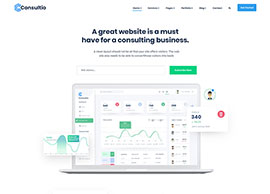This is one of those articles that only a select few need to read. You must fit into one of the following criteria:
Someone who works with a company that opens a decent volume of mail by hand or someone who already has a mail opener and wants to know what is available in the market place. All others can move on from this point forward.
As with any product area, there is a huge variation on what is available. You can spend a few hundred dollars at your office supply store to get a small opener that is fed one at a time or you can spend tens of thousands on a unit that extracts the piece and can have the documents semi automatically scanned into your business system. In this article we will give you the differences to consider so you can make the best decision for your organization. As we always need to state, we have no affiliation with any vendor in this space and only intend to give you unbiased advice to help you in your search.
Letter Openers
There is a big distinction between letter openers and extractors. Letter openers typically only slice one side of the envelope where extractors open 2 or 3 sides and hold the piece for the contents to be removed. These are the big differentiators for Letter Openers that you should consider:
- Speed – Units can range from 30 per minute for hand fed machines up to 650 for automatic feed production units.
- Cutting Method – Basic units will just slice the bottom off the piece where higher end machines will mill the edge off. This may sound petty but the big difference is paper cuts. The milled versions will have a softer edge which is important when pulling the contents out of hundreds or thousands of envelopes per day.
- Adjustable Cutting Heights – It can be very important to control where the cut is being made to avoid damaging the content inside the envelope. If you do large volumes of mail, I recommend using an external jogging machine that shakes the content down to the bottom. You then take these pieces and put them into the letter opener feeding the opposite side down to avoid cutting the document inside. Regardless, the more control on where the cut is being made will be helpful in the long run.
- Feeding and Stacking – How many pieces can it hold in the feeder and onto the stacker after it exits the unit? Also, how flexible is the feeding to mixed envelope sizes? Finally, can the deck handle larger 9×12 and 10X 13 envelopes?
- Paper Path Access – If there is a jam, is it easy to get the contents removed?
- How are the chips handled? When the units opens the envelope, there will be waste (Chips) that need to be stored and then easy to be thrown away or recycled. Make sure this bin holds enough chips that you will not be emptying it too frequently for your mail application. Also, make sure it is easy to access.
- Noise Level – These units may be placed in an office environment and can be noisy. Get the decibel level for that unit or go see the machine run to make sure it will work in your space.
- Additional Features – This is a listing of some additional options that are available on some mid and higher level units that may be worth asking for:
- Counter – To keep track of the amount of pieces processed.
- Diverter – To be able to automatically sort pieces to different bins once the exit the opener. Example would be if you are receiving checks in your business reply envelope vs. other miscellaneous pieces. You may want all of your envelopes sorted to a different bin.
- Ink Jet Printer – As pieces are run through the unit you may want to print the date received, mark confidential or add a custom message/instructions to the envelope for further processing groups.
Some of the main vendors in this space are Opex, Neopost, Pitney Bowes, FP, Martin Yale and Formax.
Extractors
These units are slower than letter openers but make the process easier downstream. They will open three sides of the envelope and hold it for an operator to remove the contents. They will typically be in a desk like setup where the operator has a workstation around them to manage the paper.
This technology has come a long way over the last few years. The big innovations are around what you do with the piece after it exits the envelope. As an example, Opex has a scanner option that is built right into the workstation. As the piece is removed from the envelope it is placed on the scanner and the contents are seen on the screen for automatic or manual routing. This can streamline a mail center and allow you to digitize what is coming into your office. Opex is the leader in the extraction field so if you are looking at this level of technology, I would recommend going to their website and seeing the videos for how their units work.
Choosing the right Vendor
Regardless of the type of unit you are looking at, pay attention to the following when choosing a vendor and system.
- Support – How will the provider service your unit and make sure you are up and running for the future? Blades need to be sharpened, belts can wear out and units need to be cleaned. Many of these machines are too big to want to ship out for service or you may be too dependent on it and need it up and running quickly. You will see openers in office supply stores or on EBay, but be careful to find out if they can support you later on. I recommend using a provider that can service you on site and has many local installations and a designated service staff.
- Pricing – I typically recommend buying these units over leasing because they can last a long time. I have seen units in offices from 20 years ago that are still working. If you were to lease, you would need to replace it every 3-5 years when the lease is up or do a buyout that may be expensive. Automatic feed units will start at around $2,000 but will increase with speed, features and durability. Also, many vendors will be selling units made from other providers so it is a good idea to get a couple of different quotes (They may be for the same core unit).
I hope this guide makes it easy for you to know what to look for with mail openers and extractors and that you are able to find the right system for your organization.













































